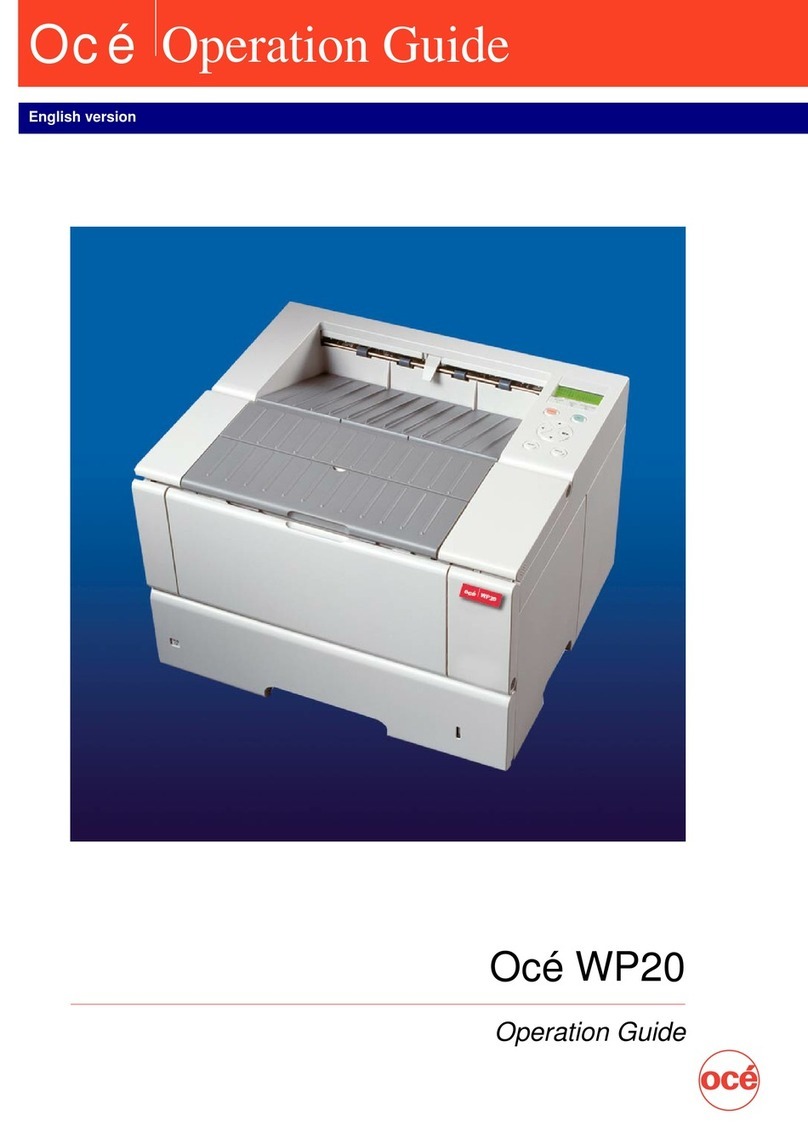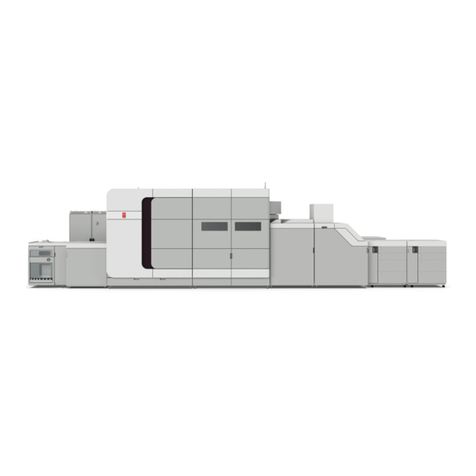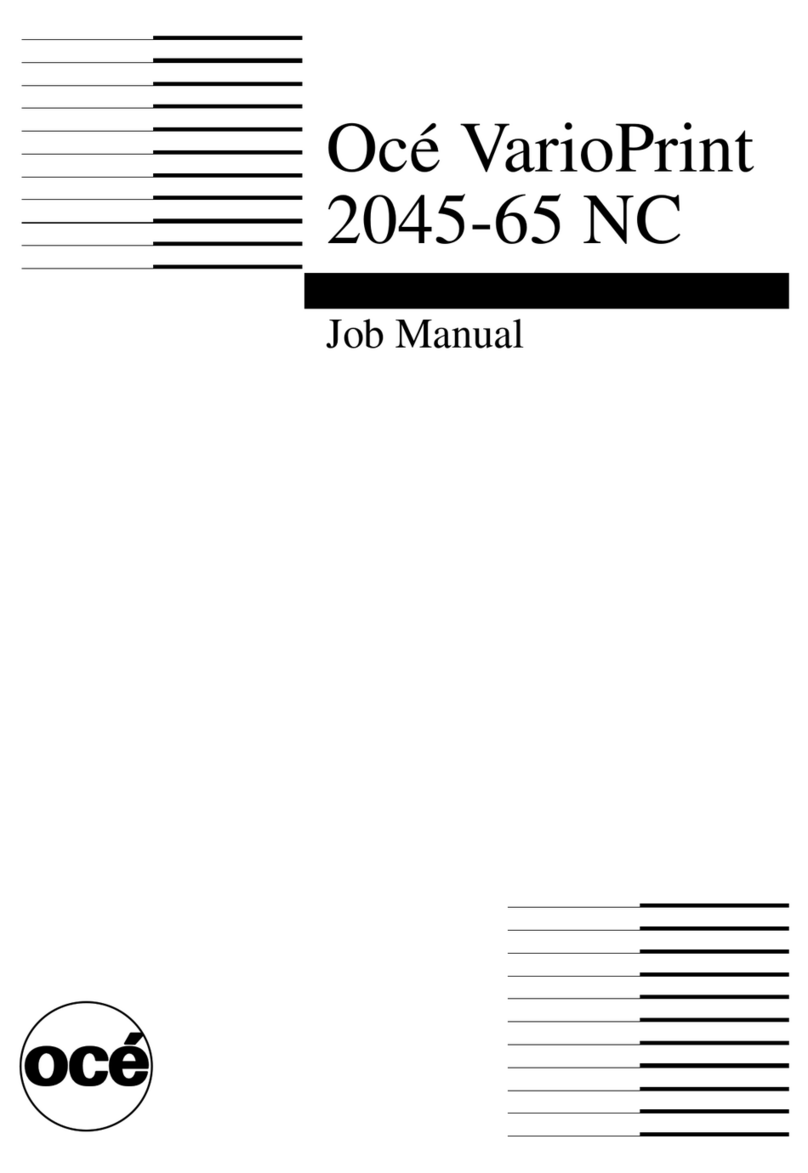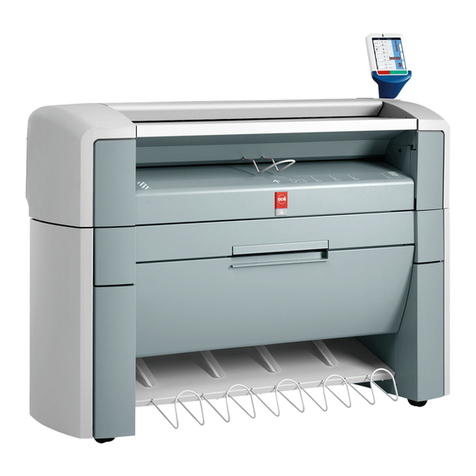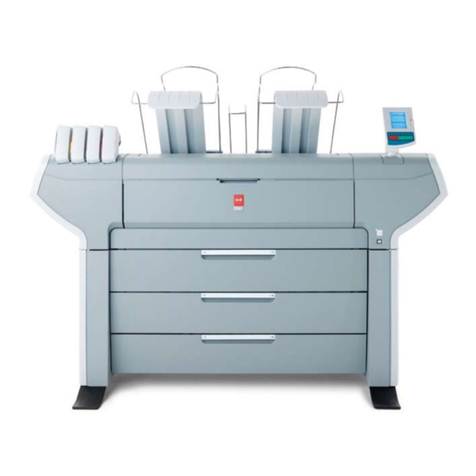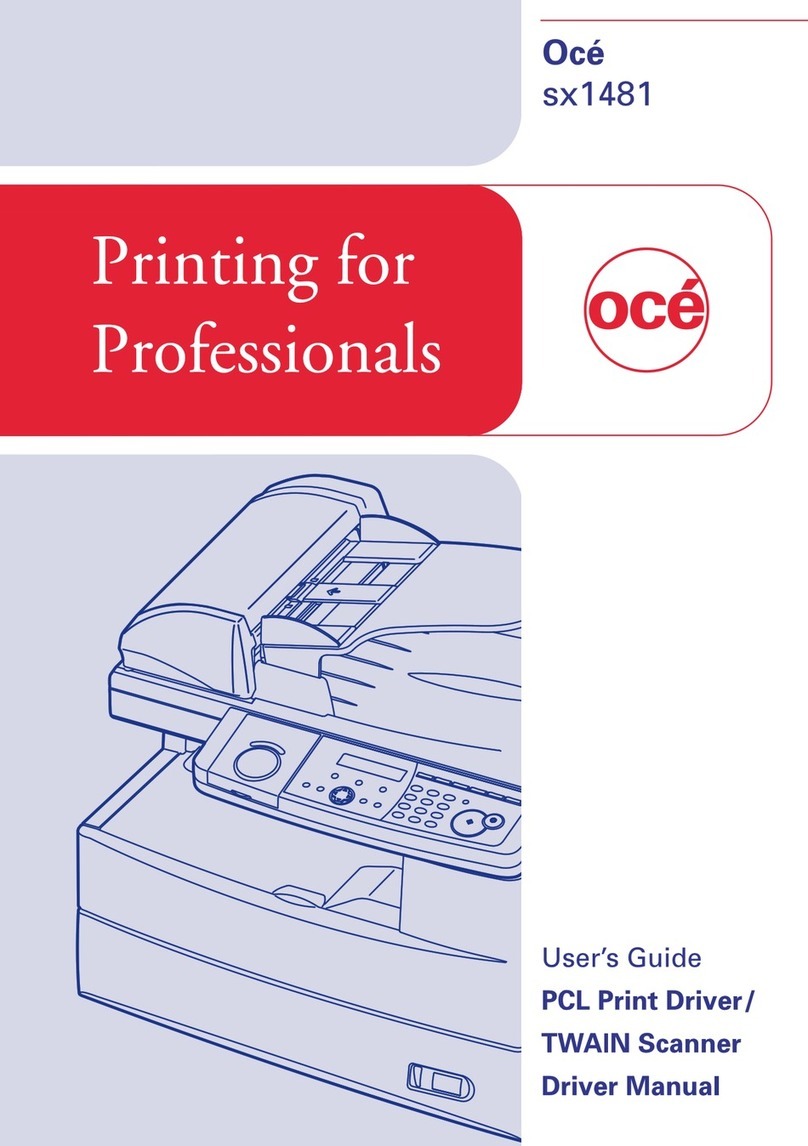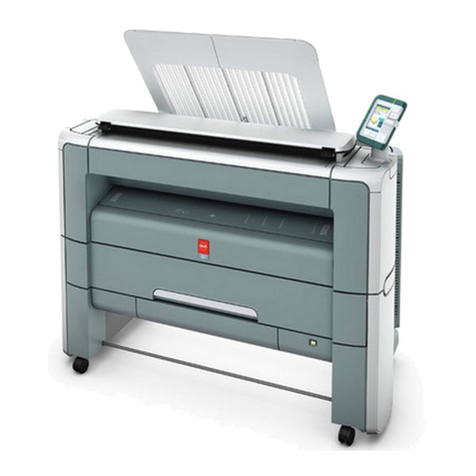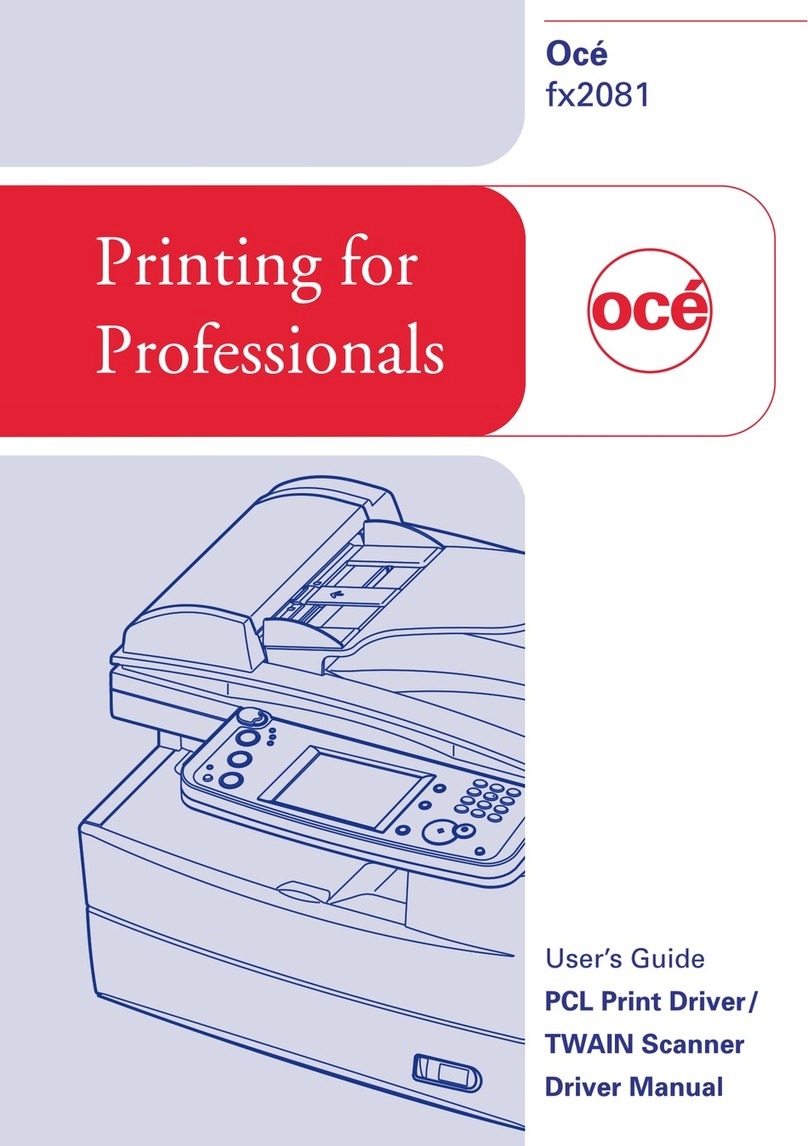
Introduction 7
Responsibilities of the T220UV Operator
The operator of the Arizona T220UV must be properly trained. Océ provides training for the operator in the use of the
Arizona T220UV hardware and software at the time of installation. It is the customer's responsibility to ensure that only
properly trained personnel operate the printer.
Operators of the Arizona T220UV should be fully versed in the operation of Onyx PosterShop® . For any operator unfamiliar
with its operation, Onyx PosterShop® training is required. On-site or off-site training courses are available; contact Onyx
Graphics Corporation for more information:
http://www.onyxgfx.com/support_training.html
The operator or other trained personnel are expected to handle all user maintenance as detailed in the User Guide, and also
replacement of consumable parts (except print heads). If your site has a technician in charge of printer maintenance, that
person is the optimal candidate. While any trained operator may perform routine maintenance, the best maintenance results
from familiarity with the printer's internal operation and history.
The Arizona T220UV printer requires some daily maintenance. Periodic cleaning must be scheduled for some components
on a weekly basis. A few minutes spent cleaning ensures the highest quality prints. Several areas require maintenance to
ensure the highest print quality, and the printer design gives you easy access to all these areas. Refer to the Arizona T220UV
User Guide for details.
It is the responsibility of the operator to try to eliminate simple problems before calling a service representative. But knowing
when to call for service is also important. An untrained operator must not attempt to service the printer as this may cause
further damage. When you have determined that a service call is required, call as soon as possible. See the Maintenance
section for more details.
Responsibilities of the T220UV Service Technician
Field service technicians must have Océ Arizona T220UV service training. The service technician is responsible for all
repairs, upgrading and modification requested by the customer or mandated by the Océ Service and Support Group.
Service personnel are furnished with proper tools for the installation and maintenance of the Arizona T220UV printer. In
addition to the T220UV tools and custom kits, each engineer will have basic tools for proper maintenance and servicing.
An Océ help desk consultant initially screens all customer calls. This means that a trained Océ Arizona T220UV specialist
with system training handles the calls and helps you understand your problem or situation. This process minimizes the
number of print quality issues that are not directly related to hardware. All hardware problems are dispatched to field service
technicians. If an on-site visit is required, the help desk technician can recommend parts which then can be ordered, thus
increasing efficiency in the service cycle.
Statement of Foreseen Use
The Océ Arizona T220UV flatbed inkjet printer uses piezo printing technology and UV curable inks to produce
outdoor-durable output. It can print directly onto rigid and flexible substrates up to 62 inches wide by 120 inches long by 2
inches thick (1.6 m x 3 m x 5 cm).
The Océ Arizona T220UV holds substrates stationary while the print head assembly moves across to create the print,
eliminating image skew problems associated with rigid stock feed systems. It can print full bleeds, saving time and labor
costs in finishing.
With four print heads per color, the Océ ArizonaT220UV can produce prints at a production speed of up to 180 square feet
(16.7 m2) per hour. It includes the unique Océ ColorBlend® super-CMYK technology, for an apparent resolution of 600 dpi.
The Océ Arizona T220UV uses UV curable pigmented inks, and can print directly onto a variety of uncoated rigid or flexible
substrates such as foam-core style mounting board, PVC sheets, styrene, aluminum-plastic composites and vinyl.
Note: "Océ ColorBlend" is a registered trademark of Océ Display Graphics Systems, Inc.
